In a controversial move that has sparked nationwide debate, President Donald Trump has ordered the deployment of 2,000 National Guard troops to the Los Angeles area. The decision comes amid growing protests against immigration raids, which have recently targeted several local businesses believed to be employing undocumented workers.
The unrest follows a broader federal crackdown on illegal immigration, a central theme of Trump’s presidency. However, this latest escalation marks a sharp departure from previous enforcement tactics. While National Guard units have been sent to California before—typically during major episodes of civil unrest or natural disasters—this is the first time they have been deployed in response to localized demonstrations over immigration enforcement.
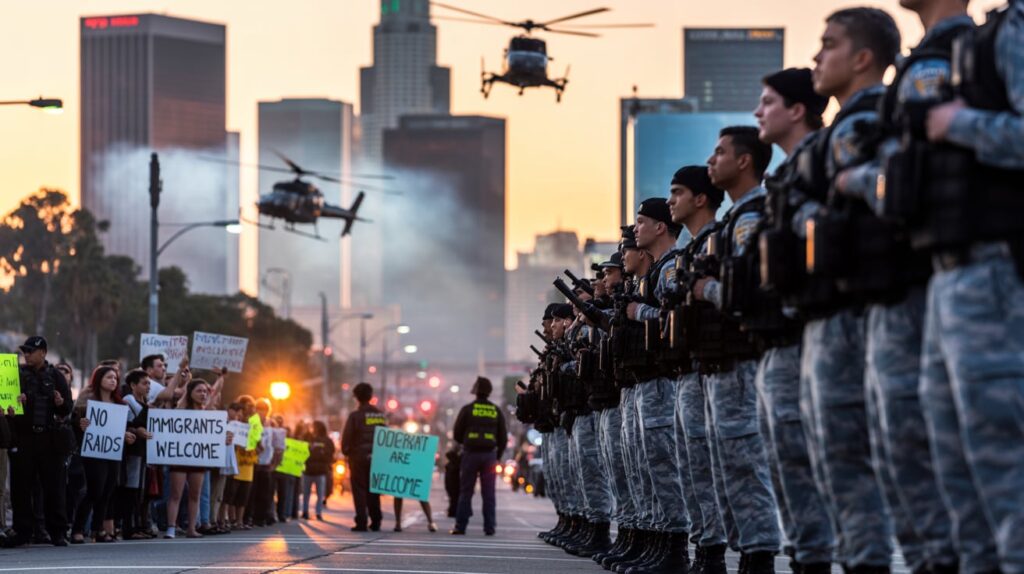
According to The Los Angeles Times, the protests, though intense, were not widespread riots but rather focused actions by activists, immigrant rights groups, and local residents who clashed with law enforcement outside affected workplaces. Scenes of tear gas, mounted police, and large groups of demonstrators filled the streets of downtown L.A., raising fears of further violence.
Critics have described the deployment as heavy-handed and politically motivated. California Governor Gavin Newsom condemned the move, stating that “this administration is manufacturing chaos to justify its draconian policies.” He added that the presence of troops “only inflames tensions and endangers the very communities the federal government claims to be protecting.”
Many Democrats echoed these concerns, accusing Trump of using federal resources to create a spectacle for political gain. “Sending in the National Guard for what are, in essence, civil demonstrations, is not leadership—it’s intimidation,” said Senator Alex Padilla of California.
Some political analysts argue that this may be exactly what the Trump administration wants. A recent editorial in The Economist noted that the deployment appears to be as much about symbolism as it is about security. “It sends a clear message to Democratic strongholds,” the piece argued: “Stand in the way of the administration’s immigration agenda, and there will be consequences.”
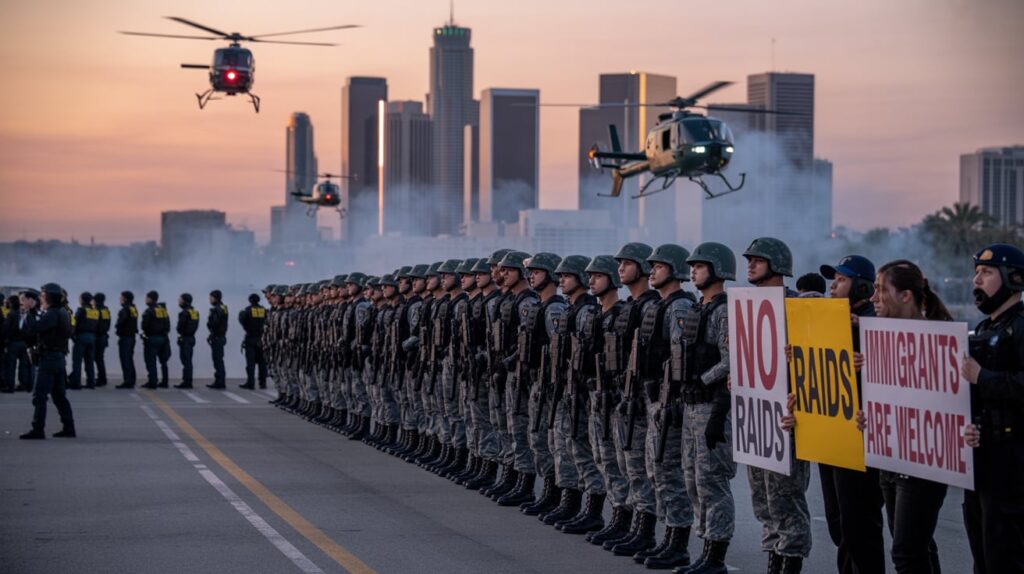
Indeed, this kind of messaging has become a hallmark of Trump’s political strategy. By framing immigration enforcement as a battle between federal authority and uncooperative liberal states, the administration galvanizes its base while putting pressure on Democratic governors and mayors who oppose mass deportations.
However, legal experts are divided on the implications of using military force—albeit in the form of the National Guard—in such situations. While the president does have broad powers to deploy troops for domestic missions under the Insurrection Act or at the request of state officials, doing so unilaterally for political purposes risks setting a troubling precedent.
Civil liberties advocates are particularly alarmed. “This kind of militarized response to constitutionally protected protest sets a dangerous tone,” said Maria Alvarez, director of the California Civil Rights Network. “People have the right to speak out against unjust laws and policies without being met with armed force.”
As the situation unfolds, the political fallout is likely to extend far beyond California. With immigration once again dominating the national conversation—and with a presidential election season approaching—Trump’s bold move in Los Angeles could serve as a litmus test for how much executive power the public is willing to tolerate in the name of border security.
Whether the National Guard presence will tamp down tensions or inflame them further remains to be seen. But one thing is clear: the battle over America’s immigration future is being fought not just in Washington, but in the streets of its biggest cities.
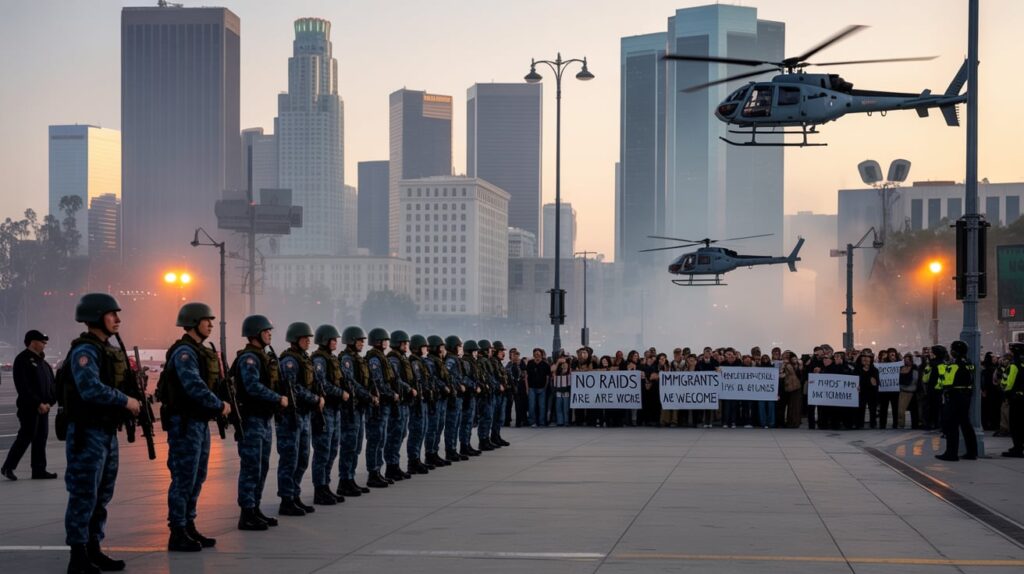
Conclusion:
The deployment of National Guard troops to Los Angeles represents a significant and polarizing moment in America’s ongoing immigration debate. While the Trump administration frames the move as a necessary step to enforce federal law and maintain order, critics argue it reflects an alarming use of military force to suppress dissent and intimidate communities. As protests continue and political rhetoric intensifies, this action may prove to be more than a response to immigration enforcement—it could be a warning to other cities that resistance to federal policy comes with consequences. In the end, how the nation responds to this moment will help define the balance between security, civil liberties, and the right to protest in a deeply divided America.

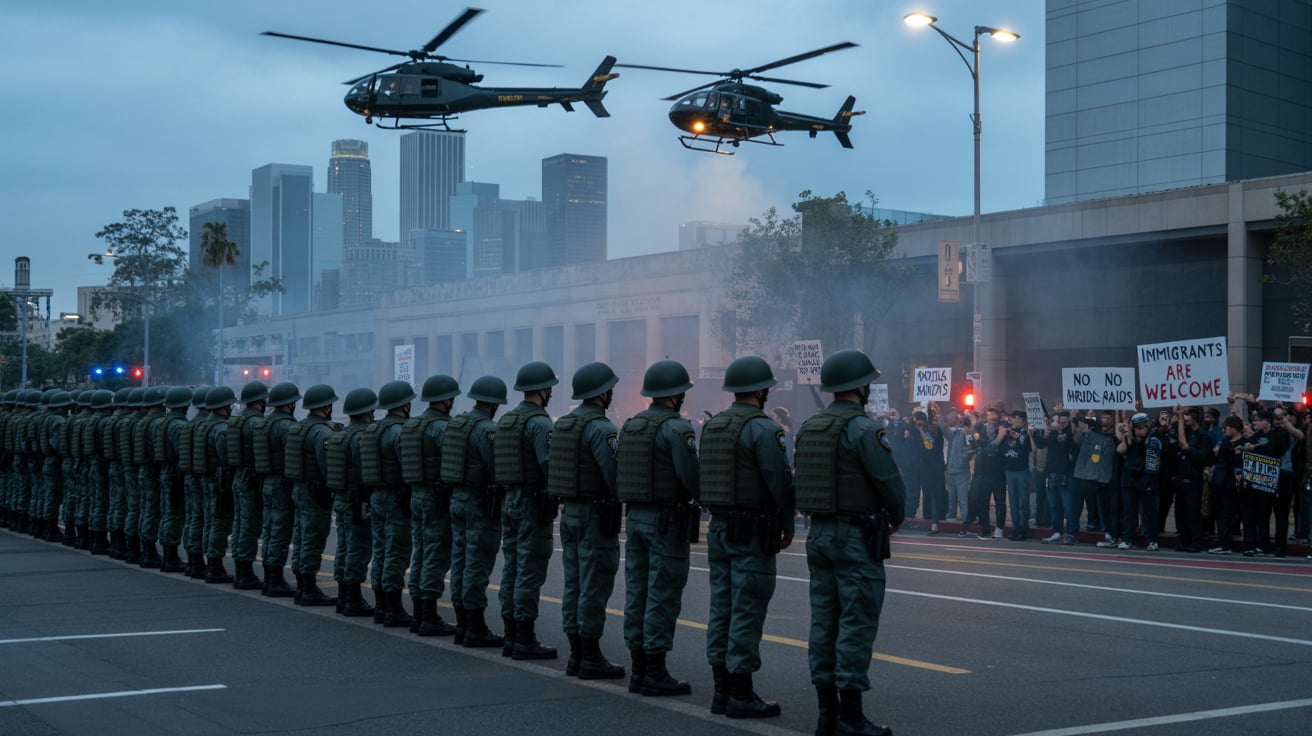
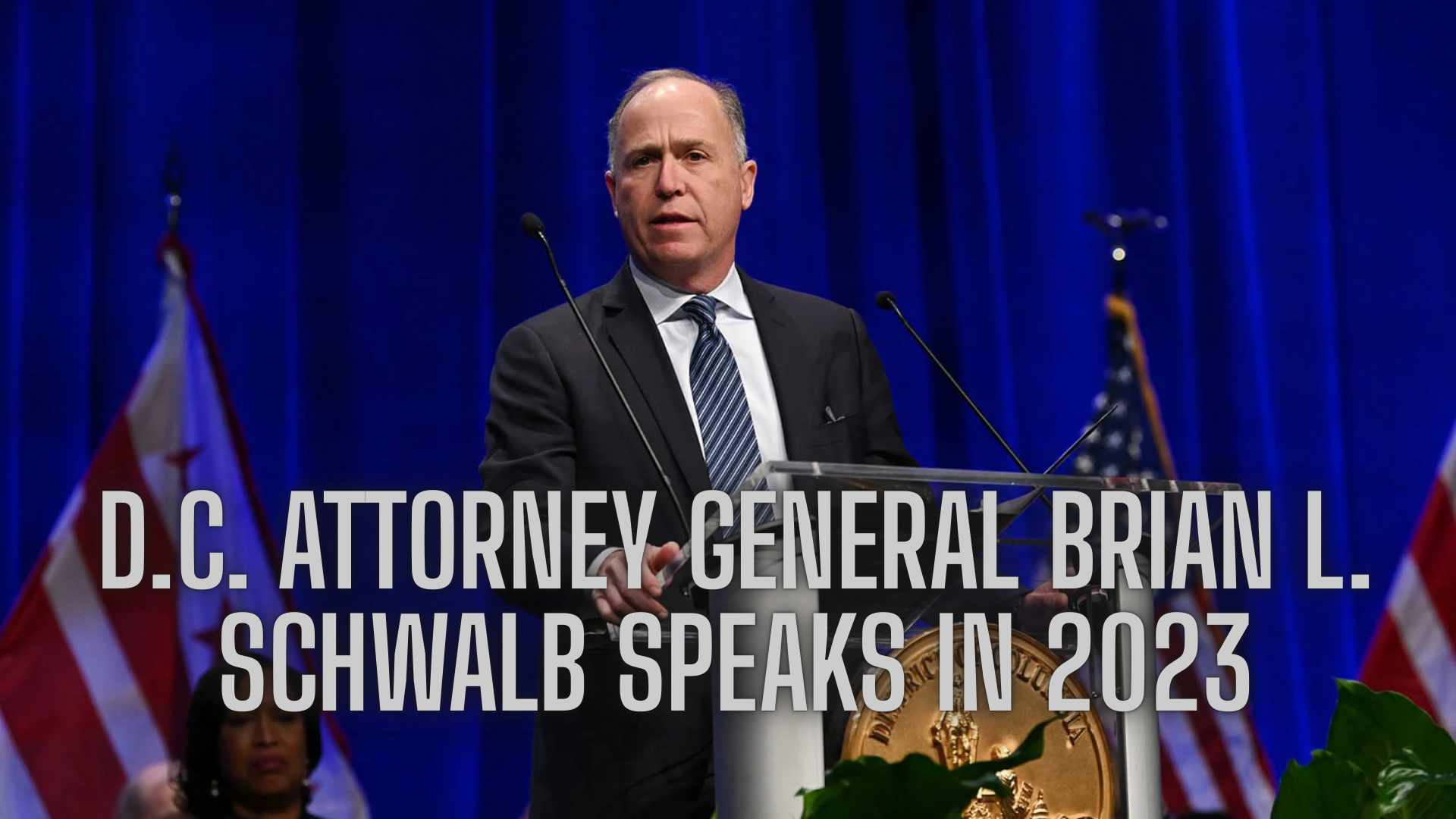
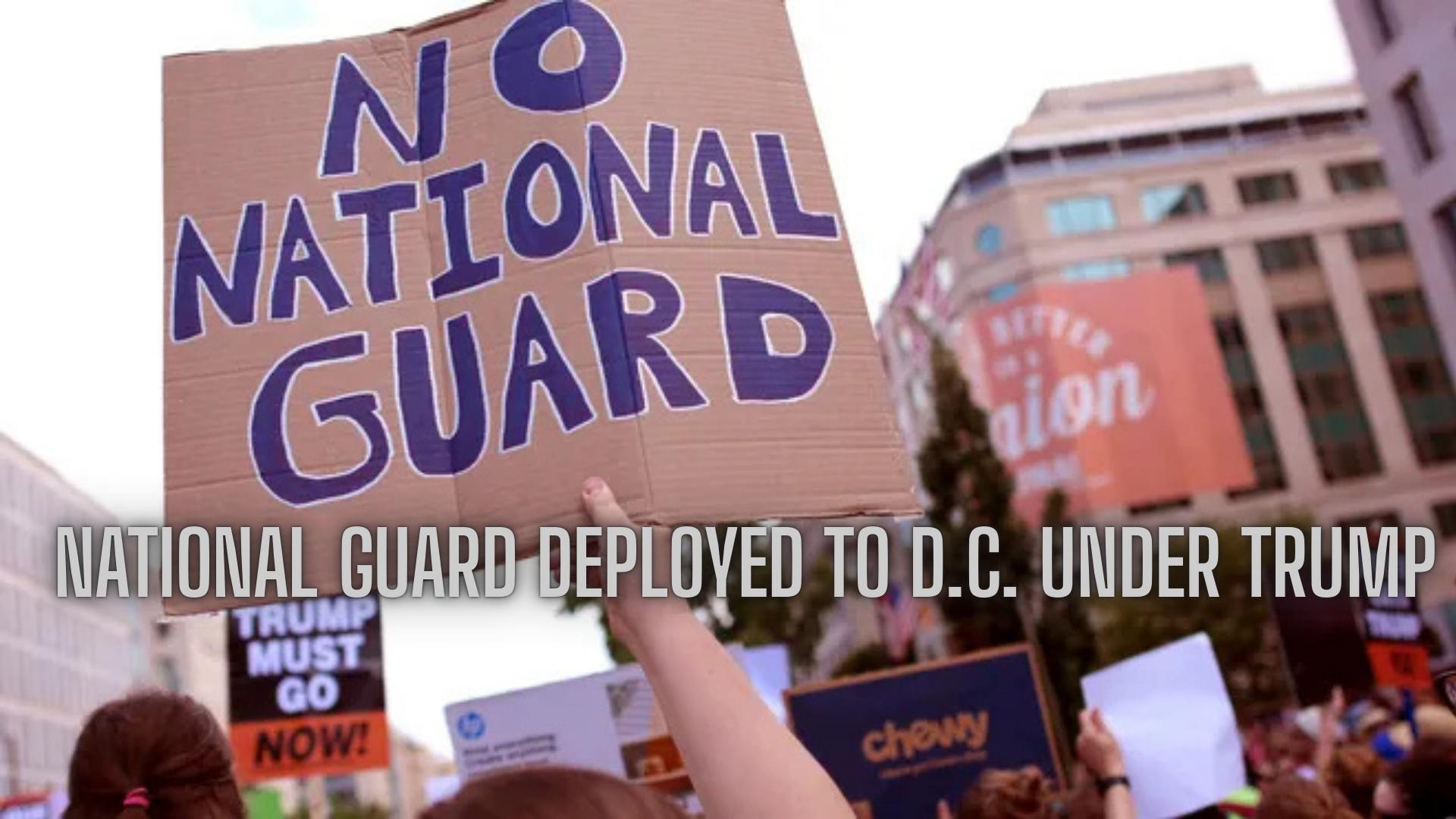
One thought on “Trump Sends National Guard to Los Angeles as Immigration Protests Escalate”